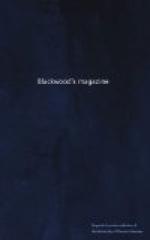In the day, 8 lb. of bruised oats. 3 lb. of bruised beans. 4 lb. of chopped straw. ------ 15 lb.
At night
22 lb. of steamed potatoes.
1-1/2 lb. of fine barley dust.
2 lb. of chopped straw.
2 oz. of salt.
----------
25-1/2 lb.
“Estimating the barley-dust at 10d. per stone; chopped straw, 6d. per stone, potatoes, steamed, at 7s. 6d. per cwt.; and the oats and beans at ordinary prices, the cost of supper was 6d., and for daily food, 1s. with cooking, in all 1s. 6d. a horse each day.”—Vol. ii. p. 194.
The reader will also peruse with interest the following paragraph, illustrative at once of the habits of the horse, and of our author’s familiarity with the race:—
“The horse is an intelligent animal, and seems to delight in the society of man. It is remarked by those who have much to do with blood-horses, that, when at liberty, and seeing two or more people standing conversing together, they will approach, and seem, as it were, to wish to listen to the conversation. The farm-horse will not do this; but he is quite obedient to call, and distinguishes his name readily from that of his companion, and will not stir when desired to stand until his own name is pronounced. He distinguishes the various sorts of work he is put to, and will apply his strength and skill in the best way to effect his purpose, whether in the thrashing-mill, the cart, or the plough. He soon acquires a perfect sense of his work. I have seen a horse walk very steadily towards a feering pole, and halt when his head had reached it. He seems also to have a sense of time. I have heard another neigh almost daily about ten minutes before the time of loosening in the evening, whether in summer or winter. He is capable of distinguishing the tones of the voice, whether spoken in anger or otherwise; and can even distinguish between musical notes. There was a work-horse of my own, when even at his corn, would desist eating, and listen attentively, with pricked and moving ears and steady eyes, the instant he heard the note of low G sounded, and would continue to listen as long as it was sustained; and another, that was similarly affected by a particular high note. The recognition of the sound of the bugle by a trooper, and the excitement occasioned in the hunter when the pack give tongue, are familiar instances of the extraordinary effects of particular sounds on horses.”—Vol. ii. p. 216.




